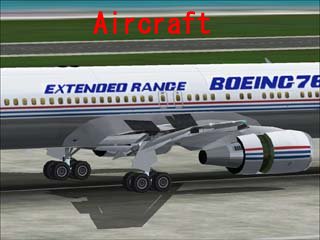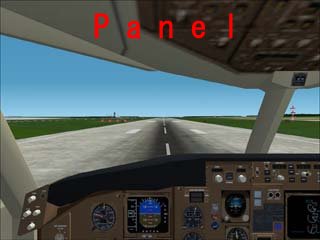Boeing B767 & B767 Extended Range
Boeing B767-300ER
Boeing 767 was developed as the semi-widebody medium range jet airliner, which was
needed by Boeing to fill a gap in its fleet family between B727/737 and B747.
Boeing 767 adopted CRT to her instrument panel for the first time, and the integration
and automation of the Flight Engineer cockpit works made it possible for the jetliner
to be operated with two man cockpit crew.
A model -200 made first flight in 1981 and went into regular service in next year
September. A model -300 is the one which has 6.43 meter extended body of the -200 model.
Each of these models was followed by an increased range (extended range, or ER) version,
which offers operators more economical and well-balanced operation. Boeing has delivered
more than 800 767s that are flown by more than 80 operators around the world.
Technial Data
B767-300ER
| Extended Range
|
Wingspan
| 47,57m
|
Length
| 54,94m
|
Height
| 15.85m
|
Operating weight
| 89,130kg
|
Maximum payload
| 36,970kg
|
Gross weight
| 175,540kg
|
Engine
| GE CF680C2B4(26,260KG) x 2
|
Fuel Capacity
| 91,380L
|
Cruise speed
| M0.80
|
Range
| 10,670km
|
Takeoff runway length
| 2,960m
|
Landing runway length
| 1,740m
|
Boeing B767-300 PANEL
Retouched instrument panel with the manipulatable overhead panel which
has the fuel gauge.
EICAS on the panel of -300 (P&W) has EPR indication, however, same on
the -300ER(GE) has no EPR indication.
1
| AFDS (Autopilot Flight Director System)
|
2
| ASI (Airspeed Indicator)
|
3
| RMI (Radio Magnetic Indicator) NAV1/NAV2 Pointer controls - eye candy.
|
4
| EADI (Electronic Altitude Direction Indicator)
|
5
| EHSI (Electronic Horizontal Situation Indicator)
|
6
| Altimeter
|
7
| VSI (Vertical Speed Indicator)
|
8
| Clock
|
9
| Autobrake (No function on DISARM & position 4)
|
10
| EICAS GE (Engine Instrument Crew Alert System)
|
11
| Landing gear lever
|
12
| Flap position indicaotr
|
Back
Copyright(C) 2002 AeroSim Co., Ltd. All rights reserved.




